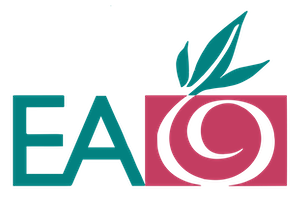College Admissions Tips and Guidance
Cost, Culture, and Competition: What’s Driving Demand for Public Universities

Explore Our Articles
Recent Posts
Popular Categories
Get In Touch
On Social
By Phone or Text
(617) 734-3700
By Mail or Email
1678 Beacon Street
Brookline, MA 02445
By Form
Educational Advocates
Our objective is to guide the family in finding options where the student will not only get admitted, but thrive and find success once on campus.
Cost, Culture, and Competition: What’s Driving Demand for Public Universities
This year, the University of Michigan saw a dramatic increase in applications, up 11% over 2024, a sign of just how popular public universities—especially state flagships—have become. Nationwide, public university applications rose 10%, far outpacing the 2% growth at private institutions (Figure 21).

SOURCE: The Common Application
Rising Costs Shift Interest to Public Options
More than 73% of college students at all levels attend public universities, and applicants across the USA are applying to state flagship institutions in increasing numbers. One reason for the increased interest in public colleges is cost. Families are increasingly questioning the soaring cost of attending private colleges. Some state universities offer merit awards for out-of-state students or regional reciprocal agreements for discounted tuition. Families who don’t qualify for need-based aid at private colleges often turn to public universities as a more affordable alternative.
Between 1985 and 2010, factors such as online education, more women enrolling in college, the decline of manufacturing jobs, and the emergence of the knowledge and service economy made college more attractive. Colleges also recruited international students more heavily. As a result, higher education enrollment peaked at 18 million students. Yet by 2021, enrollment fell by more than 11% due to the high cost of college and an increasing belief that college no longer offered the same value as it had for previous generations. The pandemic further impacted enrollment, though it has since recovered—there was a 4.5% increase in enrollment for fall 2024 over the previous year.
Where students are applying has also shifted. Those applying to both public and private institutions increased by 6%, while those applying only to public institutions increased by 7%. Yet, those applying only to private colleges declined by 4% (Figure 23).

SOURCE: The Common Application
More Applicants, Fewer Offers: Growing Competition
In addition to cost, students may be turned off by the selectivity of many private colleges, so they turn to public universities where they believe they can receive an excellent education and have a better chance of admission. According to the Common App, applications to colleges with acceptance rates below 25% grew just 2% in 2024-25. That’s compared to the 8% to 9% increases seen at institutions (public and private) of all other selectivity levels. Brown, Dartmouth, Columbia, and Yale all saw decreases in their number of applicants in 2024-2025, with Harvard and Cornell not yet reporting their data. This decline can be attributed, in part, to the colleges returning to testing requirements.
Figure 1 shows the increase in applications at several state flagship institutions over the last four cycles, with UCLA and Berkeley showing small increases and decreases during these periods.
Figure 1: Number of applications in the last four cycles

SOURCE: Educational Advocates College Consulting
According to the Common Application, applications were up 6% overall this cycle, with the number of applications per student up just 1%. The number of applicants from the Southwest region grew the fastest at 33% and was evenly distributed across suburban, urban, and small-town areas. Texas was the fastest-growing state (37%), followed by DC at 18% and North Dakota at 13%. Applicants from the West saw a 1% decline, and New England remained flat.
More Northern students are heading South
The Wall Street Journal reported a 30% increase in students in the North attending Southern universities between 2018 and 2023. Reasons cited include parents pushing back on the cost of higher education as many colleges in the South are less expensive. Students are also drawn to the vibrant sports culture and school spirit.
Between 2014 and 2023, Louisiana State University (LSU) saw a nearly 500% increase in students enrolling from the Northeast. The University of Tennessee and Ole Miss also saw significant increases. Figure 2 illustrates the growth in applications to Southeast Conference (SEC) schools, with notable increases at LSU, Ole Miss, and Tennessee. Only Vanderbilt, Arkansas, Oklahoma, and Missouri saw declines.
Figure 2

What the Numbers Say
Figure 3 below shows the gradual increase in selectivity among select state flagships over four cycles. Note the drop in acceptance rates at Tennessee, an increasingly popular Southern university.

Source: Educational Advocates College Consulting
Looking Ahead: What’s Next for Admissions?
As the final numbers for the 2024-2025 application season come in, we will provide more information about admission and higher education trends, such as the use of AI in the process, the impact of the demographic cliff, and the potential impact of cuts to higher education by the Federal government.
Written by: Joan Casey
Curious how shifting trends in public university admissions might affect your college list? Schedule an introductory interview with one of our experienced college admission consultants to explore personalized strategies for navigating today’s evolving landscape.









